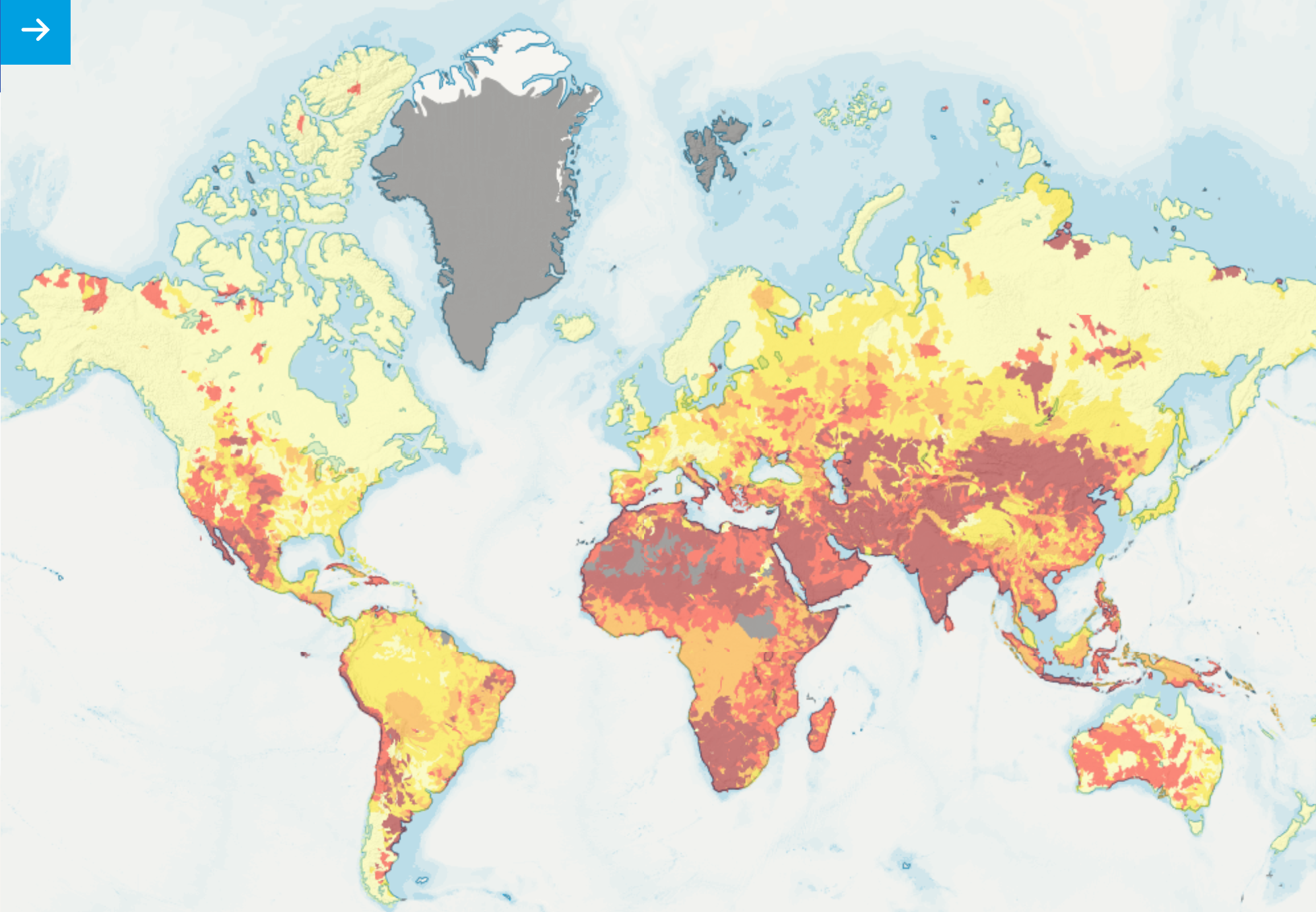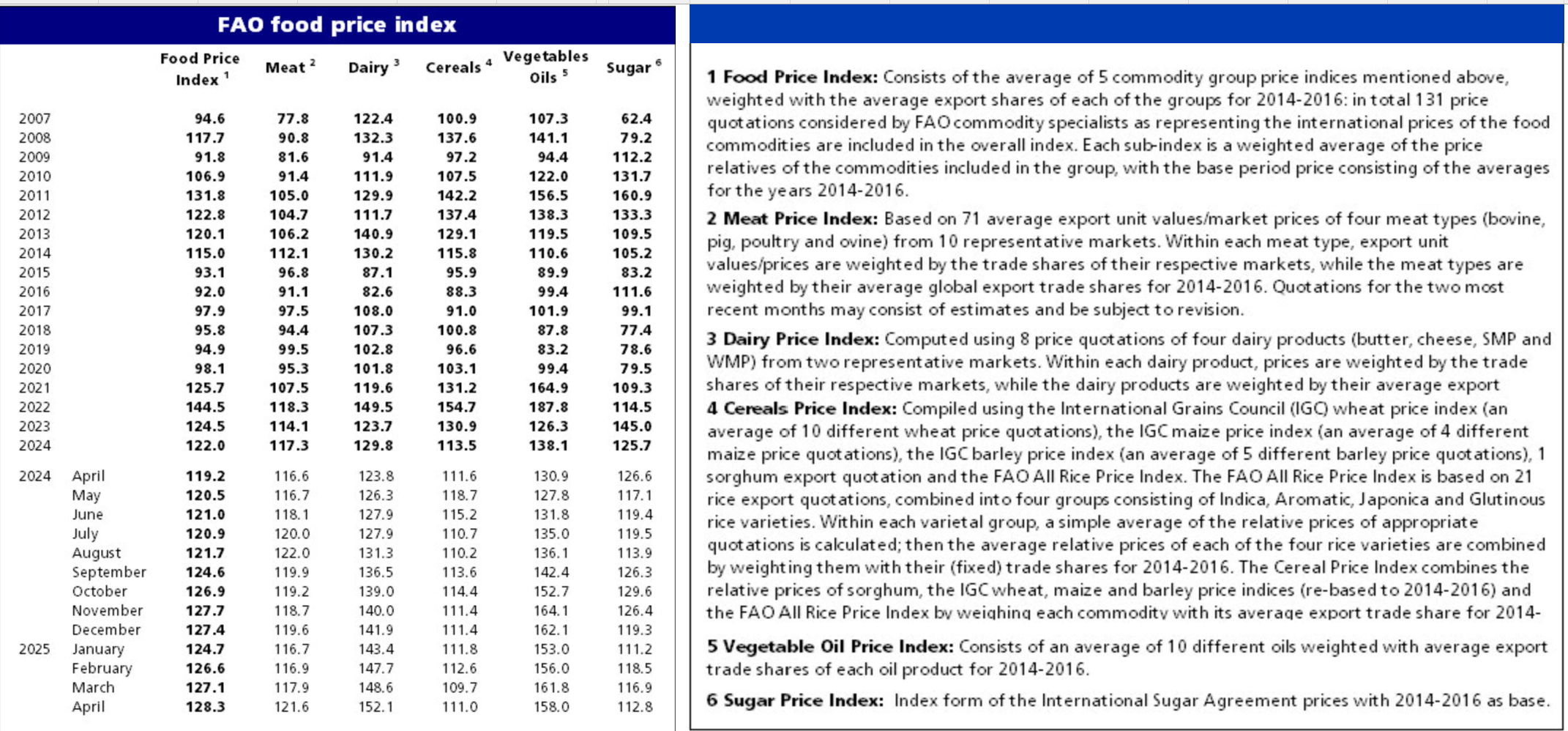Global Food Security Outlook: 2025–2045
Introduction
As the world steps into the second quarter of the 21st century, ensuring global food security has become one of the most urgent challenges. The combined effects of climate change, water scarcity, armed conflict, and population growth are straining food systems in both developing and developed nations.
By 2050, global food demand is expected to rise by 60% due to a population projected to exceed 9.7 billion. Simultaneously, the capacity to produce, store, and distribute food faces increased disruptions.
Global Food Trade Trends
The global food trade continues to experience growth, driven by factors such as population increases, urbanization, and changing dietary preferences. However, this growth is uneven, with developing countries often facing higher tariffs that limit their access to global markets.
According to the United Nations Conference on Trade and Development (UNCTAD), high import tariffs can raise costs for businesses and consumers, potentially curbing growth and competitiveness. Tariff escalation, where higher tariffs are applied to processed goods compared to raw materials, discourages developing economies from exporting value-added goods, hindering industrialization.
Key Threats to Food Security
- Climate Change and Drought
Rising global temperatures are reducing crop yields, especially in vulnerable areas such as sub-Saharan Africa, the Middle East, and parts of South Asia.
Drought and irregular rainfall affect not only food production but also livestock and fisheries.
According to the IPCC, every 1°C rise in global temperature may result in up to 10% reduction in wheat and rice yields in warmer regions. - Water Scarcity
Agriculture consumes about 70% of global freshwater. Countries like Egypt, India, Iran, and South Africa are approaching or exceeding water stress thresholds.
Groundwater depletion in regions such as the Indo-Gangetic Plain and North China Plain threatens long-term food productivity. - War and Political Instability
Conflicts in Ukraine, Yemen, Sudan, and Syria have shown how war disrupts grain exports, reduces domestic production, and displaces farmers.
Ukraine and Russia, key global suppliers of wheat and fertilizers, saw exports blocked or slowed during their conflict, driving global prices up. - Trade Barriers and Export Bans
In times of food insecurity, countries often impose export bans (e.g., India's rice export restrictions in 2023), hurting global supply chains.
Import tariffs can increase the cost of food for low-income countries that rely on imports.
Future Trends in Food Security (2025–2045)
The table below highlights how different global regions are likely to face distinct food security risks over the next 20 years due to climate change, water scarcity, and conflict. It illustrates that sub-Saharan Africa and South Asia are particularly vulnerable to declining crop yields and water stress, while the Middle East and North Africa may suffer from acute food import dependence. High-income regions, although more resilient, could still face supply disruptions due to global trade shifts and extreme weather. The data underscores the urgency for targeted strategies, such as investing in storage infrastructure, adopting climate-smart agriculture, and securing reliable trade partnerships.
| Region | Key Risks | Projected Impact |
|---|---|---|
| Sub-Saharan Africa | Climate shocks, low irrigation coverage | Up to 40% decline in maize yields by 2040 |
| Middle East/North Africa | Water stress, political instability | Heavy dependence on food imports |
| South Asia | Heatwaves, groundwater depletion | Wheat and rice yields may decline by 10–20% |
| Southeast Asia | Rising sea levels, floods | Rice-growing areas at risk |
| Europe & North America | Increased weather volatility | Higher food prices, yield fluctuations |
Strategies to Manage and Mitigate Food Security Risks
- Water-Efficient Agriculture
- Drip irrigation and aeroponics can significantly reduce water use per unit of crop.
- Shift toward drought-resistant crop varieties (e.g., sorghum, millet).
- Encourage rainwater harvesting and groundwater recharge. - Infrastructure Investment
- Building modern silos and warehouses helps reduce post-harvest losses (which can be 20–30% in some developing countries).
- Cold-chain logistics systems extend the shelf-life of perishables. - Diversified Food Sources
- Promotion of climate-resilient crops.
- Development of aquaponics and vertical farms in urban areas. - Strategic Food Reserves
- National grain reserves to buffer against price shocks and emergencies.
- Encourage regional stockpiles and cooperative storage agreements. - International Trade and Regional Cooperation
- Lowering tariffs and eliminating non-tariff barriers for key food items.
- Developing regional food corridors (e.g., Africa’s AfCFTA).
- Transparent food trade systems to avoid panic buying/export bans. - Digital Agriculture
- Use of satellite data and AI to forecast yields, manage irrigation, and detect pest outbreaks.
- Mobile apps to connect farmers directly with markets and reduce middlemen.
Visual Data & Charts
- Projected Global Population Growth (UN)
This chart illustrates the rising global population from 2025 through 2100, highlighting an expected increase to around 9.7 billion by 2050 and over 10 billion by the end of the century. The growth is heavily concentrated in regions such as sub-Saharan Africa and parts of South Asia, which are already under food security stress. The message is clear: feeding an additional 2 billion people within 25 years will require transformative changes in agriculture, supply chains, and food policy.

- Global Water Stress Map (WRI)
This interactive map shows the baseline water stress levels across the globe, where red zones indicate extremely high water stress—meaning over 80% of available water resources are used annually. Key agricultural producers like India, Pakistan, Iran, and parts of the western U.S. are already at high risk. The chart emphasizes that water scarcity is no longer a future risk but a current crisis, posing a direct threat to food production in these regions.

- Food Price Index (FAO)
The FAO Food Price Index chart tracks the global price movement of food commodities such as cereals, dairy, meat, and vegetable oils. Recent spikes—often driven by geopolitical conflicts, climate events, or export bans—demonstrate how fragile global food markets can be. The chart underscores the volatility and the need for better risk management in national food systems.

- Global Grain Export and Import Flows
These charts (from WTO) map the major exporters (like the U.S., Brazil, Russia, and Ukraine) and major importers (such as Egypt, China, and countries in the Middle East and North Africa). The message is that global grain trade is concentrated and vulnerable to disruption. A conflict or climate disaster in one major exporter can ripple across many food-insecure nations.

- Projected Climate Impact on Yields
This type of chart shows regional projections of yield declines under different warming scenarios. For instance, under 2°C warming, wheat yields could drop by up to 20% in South Asia and Africa. It emphasizes the urgent need to invest in climate-resilient farming practices, drought-tolerant crops, and alternative water sources.

Conclusion
Global food security is no longer a concern of the future—it's a crisis of today and tomorrow. Countries must act collaboratively to address the long-term threats from climate change, conflict, and trade fragmentation. Technological innovation, smarter farming, resilient infrastructure, and open trade policies offer a path forward—but time is of the essence.